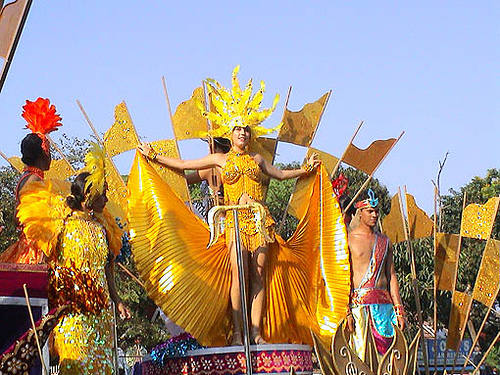If you happen to be in India in late February and early March, and while walking the streets you happen to run across people all with multicolored faces that run while spraying colors on each other you’ll know that you are in the middle of the Holi festival or “festival of colors” one of the most expensive holiday expectations by Hindus and Indian delights and entertains young and old, men and women.

Holi, one of the oldest festivals of Hindu mythology, falls on the day of the full moon in the month of Phalguna or Phalguna in the Gregorian calendar, which falls between late February and March, and marks the beginning of the month Chaitra. The festival is often characterized by a collegiate behavior, a sort of “carnival”, during which in the streets, people spray each other, often up to capacity, with water they have previously mixed with color powder usually red dyes.
The red color of the powder spray license and the atmosphere of Holi clearly refer to a festival of fertility, connected with the folk who want to scan the late winter and early spring, the return of life and to thank the gods so that the lands are fertile and the crops are rich.
During the “carnival” of Holi, as in other festive occasions like Shivaratri, the “Night of Shiva”, which usually falls in February, there might be use of the exciting mixture of dried cannabis flowers (Hindi, bhang) mostly consumed as dissolved in a drink.
Tradition has it that the god Krishna was playing Holi with Radha and the young Mandriane gopis, and until this day this holiday is celebrated with great participation in the area of Mathura, linked to the youth of the god.
It is a festival that usually takes place over two days and celebrates the triumph of good against evil. This occurrence is associated with several legends of which the most famous are those of “Holika and Prahlad” and “Krishna and Radha.”
The day of Holi is preceded the night before the celebration of Holita Dahan. For the occasion, large bonfires are lit in which the demoness Holika burns the effigy of the demon king Hiranyakashipu’s sister. It is said that Holika had been asked to kill his nephew Prahlad, son of the king of demons, because a devotee of Vishnu, was sentenced to death by a cruel father. In an attempt to assassinate him Holika tries to lead them in an oven, but in the end it’s him that ends up incinerated.
During the second day, known as Dhulhendi, there are people celebrating in the streets dancing and singing and throwing color pigments and water to everybody!!! In these celebrations noone is to be excluded, nor the animals nor the passing tourists. After another Indian legend Krishna jealous of his beloved Radha because of the beauty of her skin painted her face one day. Precisely for this reason in all this holiday lovers color the faces of their loved ones to sanction their mutual affection.
By Ina K
Travel photo: Joel Goa














